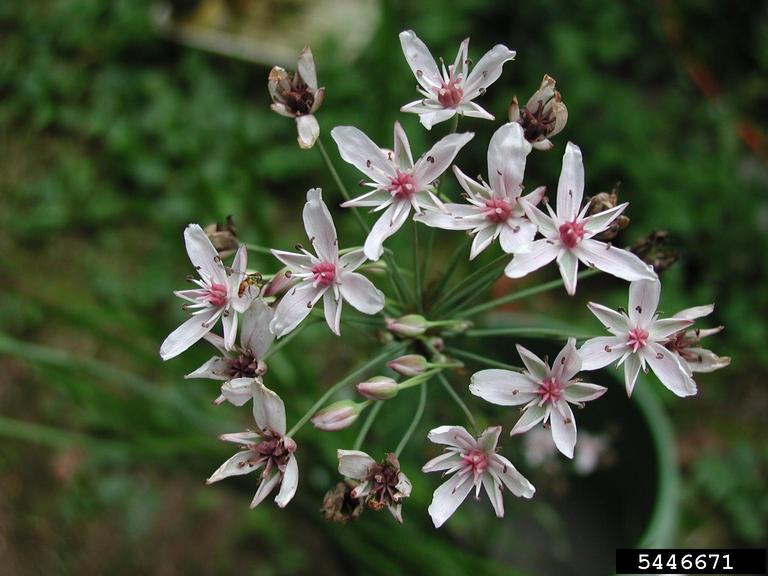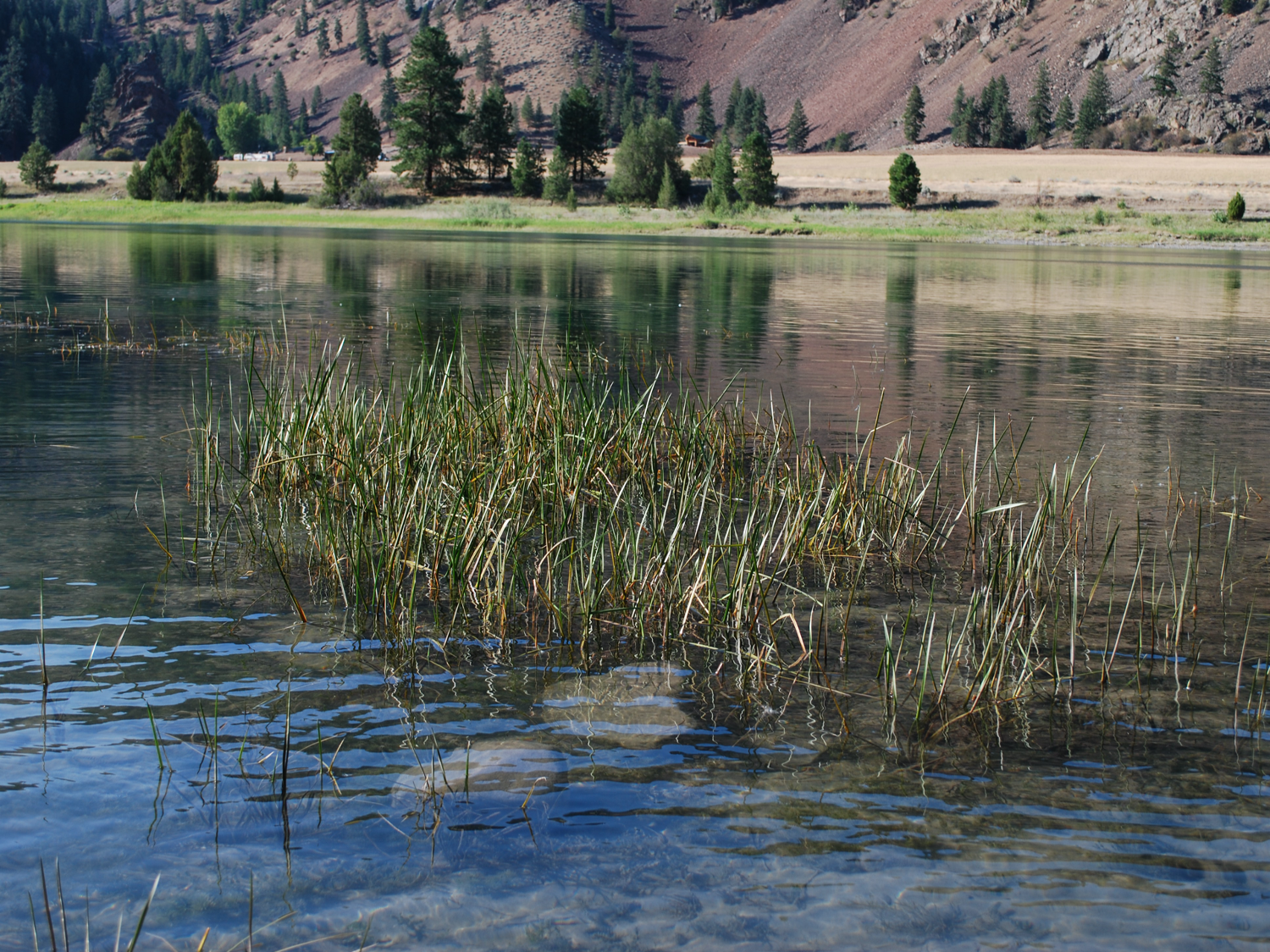Flowering Rush (Butomus umbellatus)
Introduction

Photo by Leslie Mehrhoff, U of CT, Bugwood.org.
Flowering rush (Butomus umbellatus) is a perennial, aquatic forb that resembles a large sedge. When growing in shallow waters (shoreline to 10’ deep), it has emergent, upright foliage; in deeper water (10-30’ deep), it remains submerged and has flexible, ribbon-like leaves. The 2011 November Weed Post covers identification in more detail. Flowering rush is native to Eurasia and was first recorded in North America in 1897 along the St. Lawrence River. In 1918 a second North American population was reported in Lake Erie and spread to Michigan, Ohio, and Ontario. The first record in western North America was in the Snake River near Idaho Falls in 1949. Flowering rush was first recorded in Montana in 1964 on the north shore of Flathead Lake.
Biology
Two types of flowering rush exist: one that flowers regularly and produces viable seed, and a second type that flowers occasionally but the flowers are sterile. The two types are due to differences in chromosome numbers; fertile types are diploid, having two pairs of chromosomes, while sterile types are triploid, having three sets of chromosomes. Montana populations of flowering rush are the triploid genotype and incapable of sexual reproduction. However, sterile flowering rush still reproduces through rhizome fragmentation that occurs with waves and minor disturbance like passing boats or waterfowl.
Montana Distribution

Photo by Alvin Mitchell.
Flowering rush is established in the Upper Flathead River, Flathead Lake, and in the river channel and backwaters of the Lower Flathead River and Clark Fork River (Flathead, Lake, and Sanders Counties). About 2000 acres of Flathead Lake are infested; Noxon and Thompson Falls Reservoirs have 46 and 28 acres of infestations, respectively. There are small but unquantified infestations in Cabinet Gorge Reservoir. Information on distribution in Idaho and Washington can be found in the Columbia Basin Flowering Rush Management Plan.
Management
Prevention of further spread is the management priority for flowering rush. Thoroughly washing recreational equipment and removing plant parts wrapped around boat propellers and stuck to trailers is recommended. Mechanical control, including bottom barriers and an aquatic vegetation rake, can be effective. A rhizome-leaf-feeding beetle, a stem/leaf-mining fly, and a white smut are being investigated as biological control agents. Chemical control research in Montana has shown promising results with imazapyr and imazamox applied in mid-April during draw-down conditions on Flathead Lake. After seven years of treatment, imazapyr showed 89% rhizome reduction and 96% top growth suppression; imazamox showed 82% rhizome reduction and 83% top growth suppression.
Learn more about flowering rush through the updated MSU Extension publication Biology, Ecology and Management of Flowering Rush and the Columbia Basin Cooperative Weed Management Area.
Further Information
For more information about this month's weed post, contact Extension Invasive Plant Specialist Jane Mangold. Past posts are available in the Monthly Weed Post Directory.
This weed post is also available as a printable PDF (677KB).
